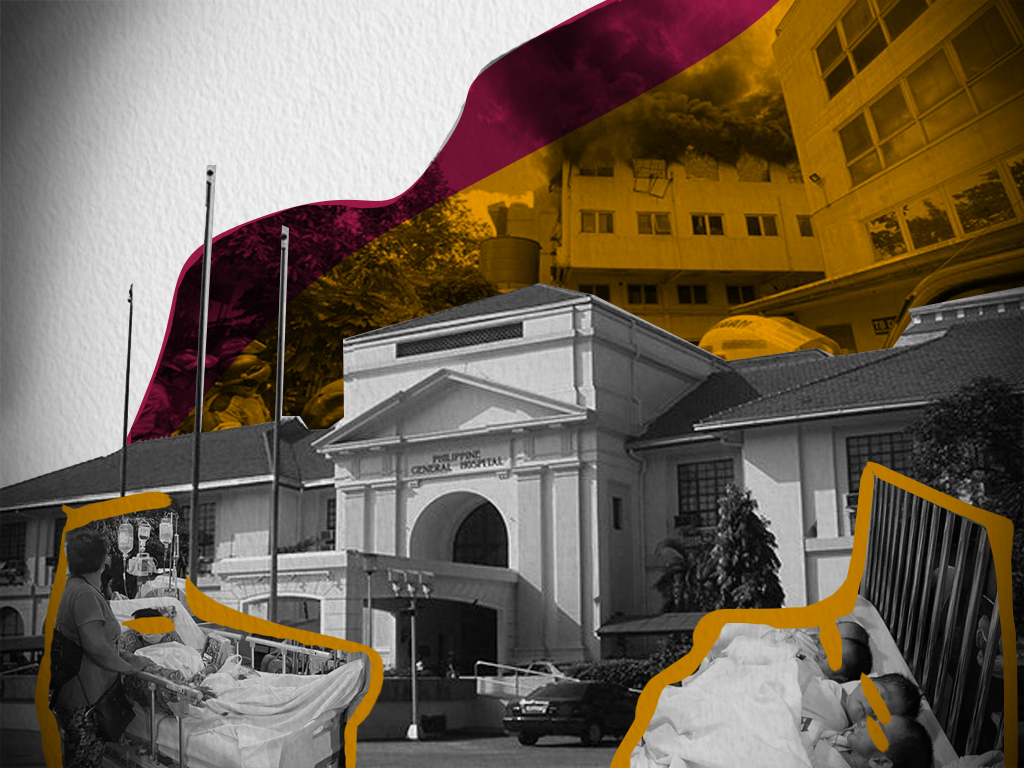Impact, accountability and rehabilitation: Unanswered questions on the PGH fire
AMID THE raging heat wave, fire struck past midnight of May 16 the country’s largest COVID-19 hospital, the Philippine General Hospital (PGH). The disaster forced the evacuation of hundreds of vulnerable patients, including infants in the neonatal intensive care unit.
Media painted a clear picture of the harrowing incident. Fortunately, no one was injured in the five-hour blaze that raced through the third floor of the hospital. But smoke engulfed other floors, displacing about 500 patients, including 156 COVID-19 patients. Minutes after the fire broke out, the hospital’s chapel was packed with patients on wheelchairs, with parents and newborn babies resting on pews and church seats, along with oxygen tanks and other medical equipment which frontliners had carried over for safe keeping.
Reports carried statements from the Bureau of Fire Protection (BFP) and hospital officials on the evacuation, suspension of operations and possible cause. Media also took note of the heroism of hospital staff and issued the call for emergency donations.
But the coverage did not follow up with questions about what should be done to restore a major training and hospital facility to normalcy so it can resume providing its much needed service to the public.
Media did not even include in their reports the urgency of getting PGH operations back to normal due to the pandemic crisis and the already critical state of Metro Manila’s health care capacity. Apart from being the main referral hospital for COVID-19 patients, PGH also caters to many indigent patients. The government facility has been since 2020 operating in crisis conditions.
The news did not have much to say about government’s response. Despite the fact that PGH is a “premier government hospital,” Health Secretary Francisco Duque III had little to say about the fire and the hospital’s dire crisis conditions. On May 17, a day after the fire, the secretary said that his agency was investigating the cause of the fire during a meeting with the president. And media left it at that. Nothing more was heard about the secretary’s response to the disaster.
Media seemed perfectly satisfied with the silence of concerned authorities on the state of crisis and its state of preparedness for such events. Reporters did not check with any officials to assess the capacity of the IATF to deal with threat of fire or other calamities that would heighten Metro Manila’s vulnerability to the pandemic danger.
News accounts also failed to recall that only four days prior to the PGH disaster, another government hospital in the capital, Pasig General Hospital, was also hit by fire. Two similar incidents in a week’s time should have prompted media to ask about the state of hospital safety within the country’s pandemic hotspot and during a global health crisis.
Filipinos took to social media to express their dismay over the seeming lack of accountability for the incident, asking more questions than the media did from government sources. Some netizens pointed out that the fire could have been avoided if the government had “upgraded and improved” the conditions of the hospital amid the health crisis.
Meanwhile, reports cited Palace spokesman Harry Roque who called for more donations. These reports did not include any information about budget resources for emergencies and calamity funds and did not ask Roque why he needed to call for donations. Only recently reports cited how calamity funds from 2020 and 2021 had gone untouched. The failure to question the call for donations betrays media’s own state of unpreparedness for the issues of crisis and their lack of disaster orientation.
COVID-19 has dominated the news cycle for the past year. Journalists should have learned a few things at this point. News events do not happen in a vacuum. Reporting these accurately requires background knowledge and the context that will raise the questions that government officials need to answer because the people have a right to know.

Leave a Reply